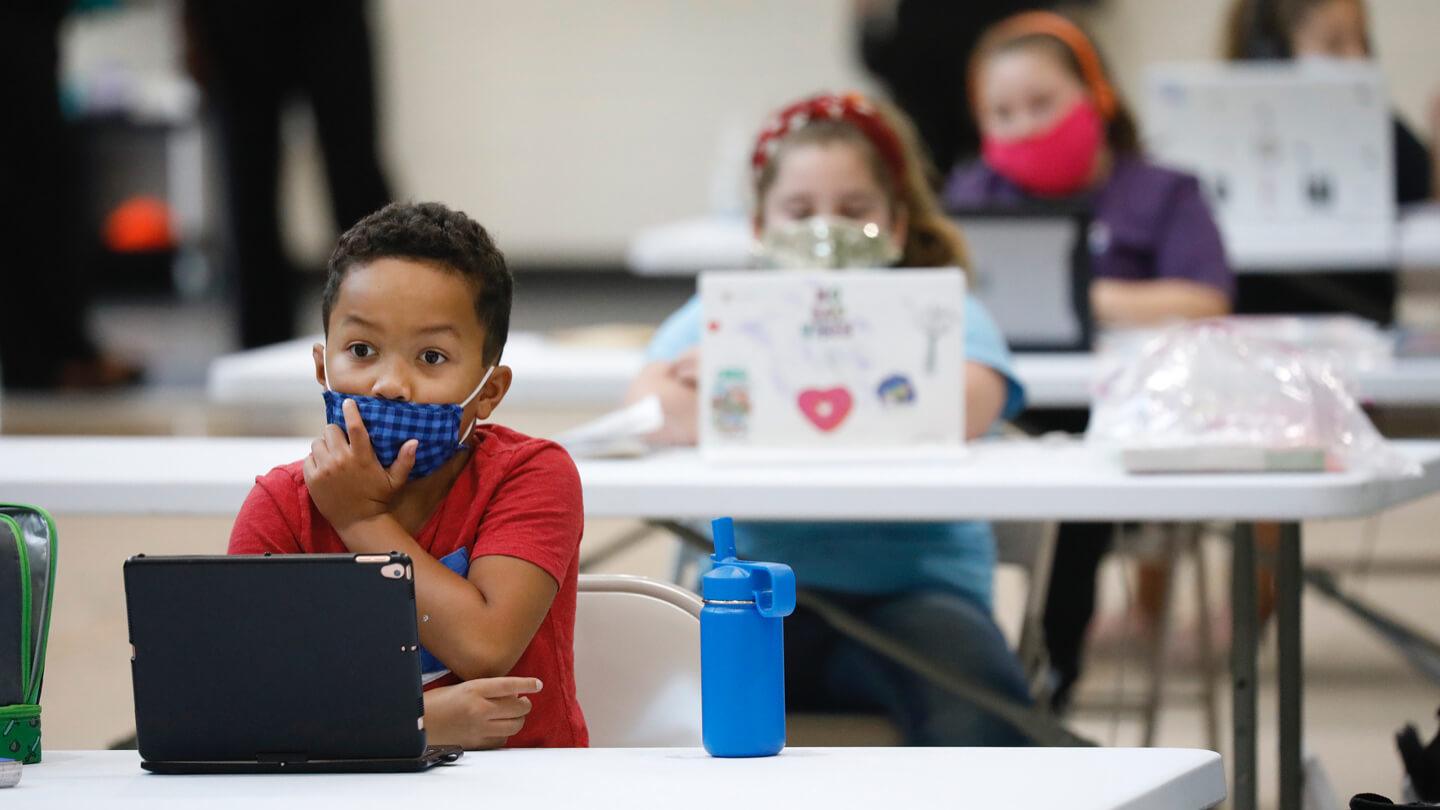Image credit: Getty
For today’s kids, internet access is more essential than ever. This is amplified as many K-12 students will resume classes online this fall. Despite months to plan for the 2020 school year, policy makers have done little to successfully address how students who lack internet service at home will be able to complete assignments or perhaps even attend school at all.
The data paints a grim picture of what’s to come.
What the data show
As of 2018, approximately 6% of students ages 3-18 had no internet access at home whatsoever. That’s nearly four million students. An additional 6% of students 3-18 could only access the internet through a smartphone.
According to the Pew Research Center, 36% of low-income parents, as compared to only 4% of high-income parents, stated that their child could not complete their schoolwork because they did not have access to a computer at home.
In addition to low-income families, Black and Hispanic students ages 3-18 are also disproportionately more likely to lack internet access at home. Over 10% of Black students and 9% of Hispanic students cannot access the internet at home. Conversely, almost 96% of white students can.
Is anything being done to address this?
Although there was discussion in Congress about funding internet service for K-12 public school students in one of the coronavirus relief packages, these discussions did not manifest into actual policy. There is currently nothing in any coronavirus relief package that helps public schools ensure that all students can access school online.
The Federal Communications Commission (FCC) has stated that the law does not allow funding to go to individual homes. Instead, all funding for internet service must be applied to a school’s physical campus despite the fact campuses are shut down.
Jessica Rosenworcel, the sole Democrat on the FCC, calls this internet disparity “a national crisis” and has urged the rest of the FCC to reconsider their stance.
“The FCC is sticking its head in the sand or looking the other way and doing everything it can to ignore this,” she said.
As a result of this lack of action, many students will have to continue to attend classes in parking lots with free Wi-Fi, such as at schools, fast-food restaurants and libraries.
![]()
“We need to start thinking of the internet as a public utility, the same way we did with electricity 100 years ago.”
Potential long-term divide among students
The impact on students without internet access demonstrates just how dire this situation truly is. According to the Annenberg Institute at Brown University, students are likely to return to school only having mastered 63%-68% of last year’s reading material and 37%-50% of the previous year’s math content
These effects are, once again, disproportionate amongst race and class. A study conducted by Harvard University, Brown University and the Bill & Melinda Foundation found that while students’ progress in math did not decline in high-income ZIP codes, students in middle-income ZIP codes declined by a third and students in low-income ZIP codes declined by half.
When the numbers are broken down by race, McKinsey and Company predicted that white students will likely fall behind by six months from continued remote learning in the fall, Hispanic students by just over nine months and Black students by 10.3 months.
McKinsey and Company also predicts an additional 2%-9% of high-school students will drop out of this school year as a result of the pandemic and online learning.
Representative Abigail Spanberger (D-Va) sums it up, “We are generationally committing to significant divides in our communities over what kind of education our children are getting.”
To better understand the impact of the growing internet disparity amongst students, read more on the homework gap and stay connected to our Resource Center for the latest insights.

Written by:
Ari HowardAssociate Writer, Broadband & Wireless Content
Ari Howard is a staff writer Healthline and spent two years as a writer on the Allconnect team. She specialized in broadband news and studies, particularly relating to internet access, digital safety, broadband-…
Read more
Edited by:
Robin LaytonEditor, Broadband Content
-
Featured
![Guide for schools and students: Resources for free internet, computers and tech]() Guide for schools and students: Resources for free internet, computers and tech Joe Supan — 9 min read
Guide for schools and students: Resources for free internet, computers and tech Joe Supan — 9 min read -
Featured
![Guide to low-income internet options and affordable internet plans]() Guide to low-income internet options and affordable internet plans Robin Layton — 4 min read
Guide to low-income internet options and affordable internet plans Robin Layton — 4 min read -
Featured
![Student and teacher internet deals & tech discounts]() Student and teacher internet deals & tech discounts Camryn Smith — 5 min read
Student and teacher internet deals & tech discounts Camryn Smith — 5 min read
Latest
-
Thursday, July 25, 2024
Worried about losing your signal? This is how to keep your satellite dish cleanDavid Anders — 6 min read
-
Tuesday, July 23, 2024
The best free TV and movie streaming services 2024Camryn Smith — 5 min read
-
Tuesday, July 23, 2024
Everything you need to know about internet speedsRobin Layton — 8 min read






